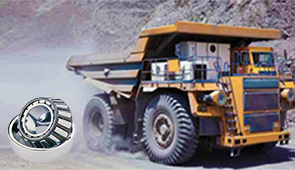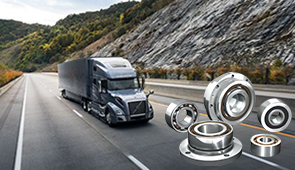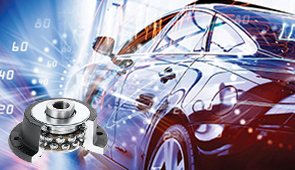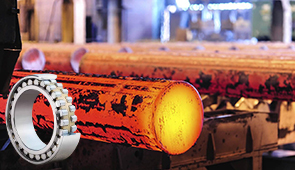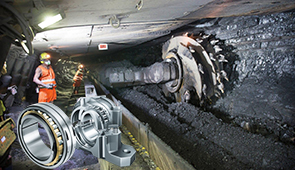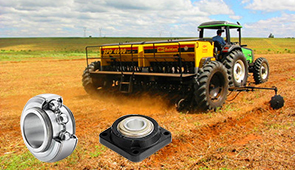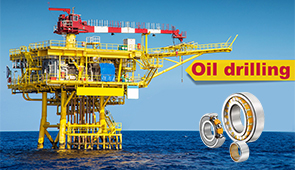Roller Bearings: The Ultimate Guide to Smooth and Efficient Machinery Operation
Roller bearings are a fundamental component in countless mechanical systems, offering a reliable solution for minimizing friction, enhancing efficiency, and supporting heavy loads. Their versatile design allows them to be used across a wide array of industries, including automotive, aerospace, manufacturing, and more. This guide aims to provide a comprehensive overview of roller bearings, covering their purpose, types, applications, and maintenance requirements. By understanding their key features and operational advantages, readers will gain valuable insights into how roller bearings contribute to the smooth operation and longevity of machinery systems. Whether you’re a seasoned engineer or new to the subject, this article will serve as an authoritative resource to deepen your knowledge of this critical mechanical component.
How do bearing rollers differ from ball bearings?

Comparing load capacity and speed capabilities
The examination of the load capacity and speed capabilities of roller bearings as against ball bearings points out that each has a specific function because of its mechanical configuration. For example, roller bearings have radial components that can take on heavier contact loads than its raceways, making roller bearings more useful. These features make it suitable for use in industrial machines like construction equipment and heavy machinery. For example, cylindrical roller bearings can support radial loads of up to 20% more than comparable ball bearings under similar conditions.
Another case is that ball bearings are perfect for high-speed applications as they have a lesser contact area, which aids in the reduction of friction. A ball bearing’s spherical contact points have the capability of generating less heat than is produced in other bearing types, which increases the operational speed of the bearing. For example, an angular contact ball bearing may reach speeds upwards of 300,000 revolutions per minute (rpm) under proper lubrication conditions, while a tapered roller bearing may only usefully operate up to around 10,000 rpm.
In the end, ball bearings may be the best choice for speed, smooth rotation, and precision, while roller bearings manage high radial and axial forces far better. Regardless, selection should always be made based on the application’s specific load and speed conditions for best performance and reliability.
Advantages of roller bearings in high-load applications
Roller bearings are built to withstand significant axil and radial strain. They have line contact between the raceway and rolling parts which increases the surface area and helps in reducing the stress that is concentrated on a specific area. There is high radial load capacity of cylindrical roller bearings. They are fitted to places where there is very little axial displacement that is vertical movement. Tapered roller bearings are much better when it comes to managing combined load, thanks to their conical shape.
- Load Capacity: Unlike ball bearings of similar sizes the roller bearing is established to have higher static and dynamic load ratings (C₀) and (C), hence ideal for heavy load operations.
- Speed Limitations: The roller bearing has a lower maximum rotational speed when compared to the ball bearing, however, their rated speed allows use in additional applications such as industrial gearboxes and heavy machinery.
- Durability: Reduces wear and tear for a sustained duration of loading conditions for spiders and bolted connections that have proper lubrication and alignment.
The above, therefore, proves the acceptance of roller bearings in places such as construction cranes, conveyor systems, industrial presses, and other equipment and tools where the load is of high magnitude.
When to choose roller bearings over ball bearings
There are instances where one must choose between roller and ball bearings. I would recommend roller bearings in applications that involve high radial or shock loads. They are also useful when notching misalignment is needed via bearing designs like spherical roller bearings. These bearings perform well because of their larger contact surface, which effectively reduces local stress concentration from bearing loads.
- Load Capacity: Spherical roller bearings bear radial loads approximately twenty to thirty percent more than comparably sized ball bearings, allowing them to be used in more strenuous applications such as cranes and gearboxes.
- Speed Ratings: Spherical roller bearings have lower speed ratings than ball bearings but they are suitable for most medium speed operations, for example, 3,000 rpm.
- Misalignment Tolerance: These bearings tolerate misalignment of up to ±2° without performance degradation.
- Service Life: With the right lubrication and alignment settings, roller bearings have the longest service life in harsh, high-load settings.
For speed-sensitive applications, one must consider the efficiency and speed rating of roller bearings. However, where load capacity and durability are key considerations in an application’s performance, roller bearings are unrivaled.
What are the key factors in selecting the right bearing rollers?
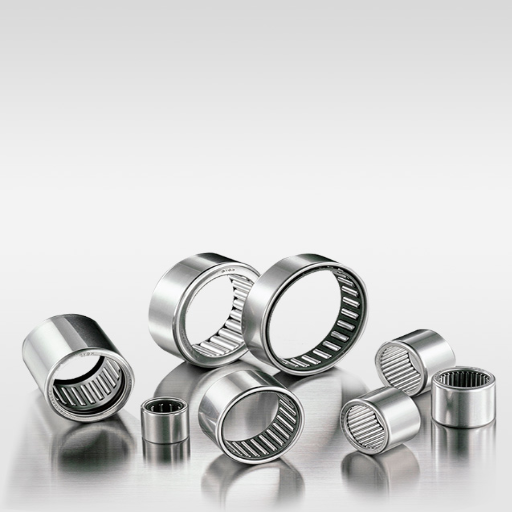
Assessing load requirements and operating conditions
To accurately evaluate the load requirements and operating conditions, I start with the types of loads that the bearing rollers will face, which are normally classified as radial, axial, or combined. Radial load is defined as the force acting 90 degrees to the bearing’s axis, while the axial load refers to forces acting parallel to this axis. Each type of roller bearing is assigned a rated capacity for both load types, which is usually given as static and dynamic load ratings in kilonewtons(kN). For instance, spherical roller bearings operate best with high radial loads while having some axial load capacity, and for angular contact bearings, it is vice-versa: best suited for combined loads with higher axial forces.
Now, I assess the boundaries for the operational conditions, which involves the rotational speed, temperature, and even the surroundings, like contamination or moisture. The operating speed should be less than the limiting speed of a chosen bearing, and I make sure to cross-check specifications in RPM (revolutions per minute). When dealing with high-temperature or corrosive environments, I prefer to use materials and lubrication systems designed to operate in those conditions, such as stainless steel bearings or high-performance synthetic grease.
With these factors – bearing roller types, radial/axial load type, static/dynamic load bearing rating, environment conditions, speed in RPM – all carefully handed, I can confidently choose the ideal bearing roller for the predicted requirements.
Considering speed, size, and material options
I select bearing rollers based on their speed, dimensions, and material requirements by evaluating their technical descriptors and analyzing performance outcomes:
- Speed Compatibility (RPM): I have no problem selecting high-speed bearings that are rated for certain speeds. In these cases, angular contact or ceramic bearings are best for high-RPM applications because they are lightweight, low thermal, and resistant to friction.
- Size Dimensions (mm): With assembly constraints and load distribution in the equations, I check bore diameter, outer diameter, and width (which is typically in mm). A compact design benefit can be realized from the low size limit of bearings, which in turn allows higher load capacity.
- Material Selection: For most purposes, steel alloys work best. But when I want to cut down on weight or deal with a corrosive environment, ceramic bearings and stainless steel come in handy because of its corrosion resistant and low inertia properties.
By methodically reviewing these interconnected factors, I can justify and adapt my selection to align with technical and operational requirements.
Matching bearing rollers to specific applications
In selecting bearing rollers for any specific application needs, I use key technical details that need to be met for the system to operate effectively. First of all, I determine the nature and size of the load to be handled and whether it is radial, axial, or a mixed load; this impacts the design of the roller bearing (e.g., cylindrical for radial loads, tapered for mixed). Next, I take into account the speed of the rotation. Here, surface speed limitations and lubrication film stability become important. Another important thing to consider is the type of material used in corrosive and high-temperature environments, which require stainless steel or ceramic.
- Load Type and Magnitude: Radial, axial, or combined loads dictate selection.
- Rotational Speed: Surface speed limits and lubrication requirements must align with application demands.
- Material and Environmental Compatibility: Consider material properties for temperature, corrosion, and wear resistance.
Following this logical sequence ensures that the selected bearing rollers meet all the requirements and operational conditions for reliable and effective use.
How to properly maintain and lubricate bearing rollers?
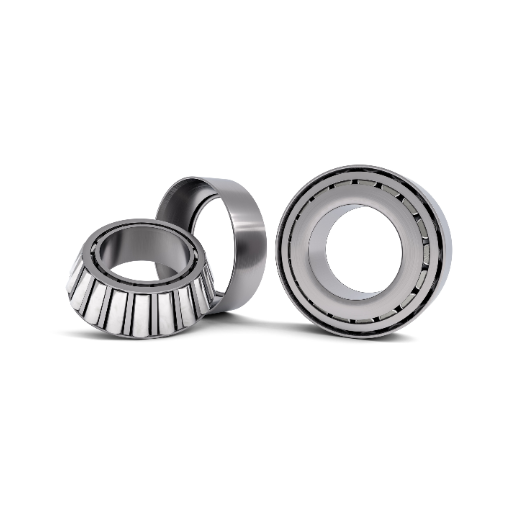
Best practices for roller bearing lubrication
To make sure that bearing rollers work effectively and reliably, I follow a few best practices:
- Choosing the Right Lubricant Mgmt: To choose a suitable lubricant, I analyze the application’s operating temperature, speed, load, and environmental conditions.
- Establishing an Appropriate Lubrication Interval: The relubrication schedule is based on the bearing type, operating speed, and temperature. Bearings that experience high speeds or extreme temperatures need frequent lubrication.
- Over- or Under-Supply of Lubrication: I make certain that the amount of lubricant provided is consistent with the specifications of the manufacturer’s recommendations. With too much lubrication, energy loss and overheating are also worsened, while too little lubricant can cause a raised rate of wear and early breakdown.
- Checking and Replenishing the Supply of Lubricating Oil: I regularly check for contamination, degradation, or depletion of the lubricant. For critical applications, condition monitoring techniques, such as oil analysis or ferrography, are used to understand how well the lubricant is working.
These steps allow bearing rollers to sustain their structure over long periods as well as allow them to function effectively in varying operational scenarios.
Signs of wear and damage in roller bearings
To make sure machines function properly without breakdowns, timing is everything. Damage and wear in roller bearings have to be detected at the earliest possible stages. Here are some metrics and reasons supporting the indicators:
- Vibration Speeds and Noisy Operations: Flaking materials, sets of pieces of rolling elements, or even raceways break apart due to lubrication, excessive loa,d or confinement areas getting caked. Spalling almost always leads to aggressive wear and higher levels of vibration at best.
- Spalling or Flaking: Weak level surface grinding with static load during sudden collisions can lead to indentations on raceway handles. This permanent damage can weaken the load-carrying strength, Strong cylinder handles manually attaching can over time rem value.
- Plastic Surface Deformation: Changes such as bends, gouges, or scratches might come from pouring a liquid that sets into a solid with obstructions like other plastic parts or setting an object over the affected area. Misalignment or over-load structures containing hard particles can lead to advanced rate of wear.
- Fretting Corrosion: Reduced value of the boned (inner ring) region allows for breeched internal structures to shift against one another, leading to shifted micro-appropriated regions of Ich and destruction of the material. Loosened notes and absence of lubrication on stray casket seats are common causes.
- Marks of Discoloration Or Overheating: Visible discoloration on the races or rolling components usually occur as a result of thermal damage. This is normally triggered by a lack of lubrication, too much frictional engagement, or excessive operational speed. Furthermore, overheating can change some the properties of the material and, at the same time, lower the hardness of the bearings.
- Vibrations Or Noises That Are Excessively High: Variation in the normal operational noise and vibration intensity indicates bearing failure. These are often attributed to dirt getting into the lubricant, too little lubricant being present, or movement misalignment of the components.
By proactively identifying and resolving the underlying issues through monitoring, operators are able to maximize the service life of roller bearings and ensure optimal efficiency of machines. To achieve the aims of predictive maintenance, regular inspections and condition monitoring are critical.
What are the common applications for bearing rollers?
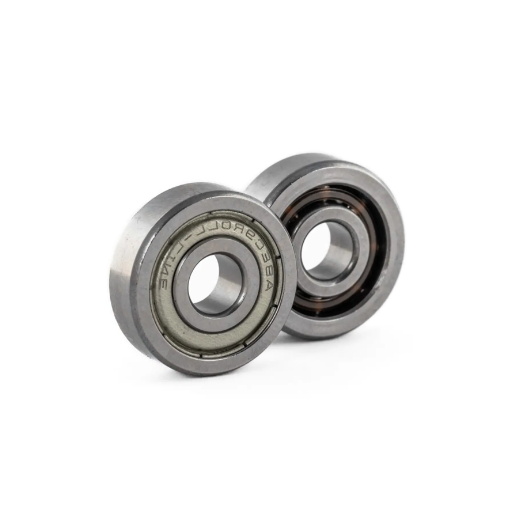
Use in industrial machinery and conveyor systems
The convex arch of roller bearings effectively works with a wide range of industrial machines and systems. They are greatly operated within heavy-duty equipment such as material handling machines, textile manufacturing machines, and food processing conveyors.
- Load Capacity: Achieving high radial and axial loads is possible with roller bearings due to their line contact distribution.
- Rotational Speed: Different contexts of application for these constructions determine the important features of the bearing. Spherical bearings are considered standard if they rotate at more than 3,000 – 10,000 RPM with sufficient lubrication.
- Misalignment Tolerance: They achieve shaft misalignment ranging from 1.5 to 3 degree angle,s as is the case with spherical roller bearings.
- Durability: Reduced wear from moving parts and contamination allows extended life of service due to certain factors such as advanced seals and material such as chrome steel or stainless steel.
Choosing the right roller bearing type for specific systems is key to optimal functioning and reliability, as well as assists in ensuring effortless continuous operation. Regular performance assessments increase the chances of keeping the bearing functioning properly under severe industrial loads.
Roller bearings in automotive and transportation
Bearings are an essential element of parts used in transport systems to facilitate load transfer and reduce friction in highly specialized systems. For example, in wheel hubs, transmission systems, and drive trains, roller bearings are selected for specific applications due to their ability to support combined radial and axial loads. The selection of a bearing type is highly application specific; for example, tapered roller bearings are mounted in axle hubs where both radial and axial forces must be applied, as they can handle both preferentially.
- Static and dynamic load support: multi-purpose bearing housing units have to cater for static and dynamic load support, with capability usually expressed in kilonewtons (kN). Heavy starting with vehicles requires tapered roller bearings with a dynamic load more than 200 kN.
- Rated speed: This range varies depending on the bearing and ranges between fifteen thousand revolutions per minute (RPM) for general use automotive and one hundred and sixty thousand for specialized applications.
- Material Strength: Light use machinery components have to be made from advanced materials such as those using chrome-based steel, which provide relatively good wear and are durable under constant strenuous conditions.
The best optimal and preventative maintenance of the roller bearings leads to an increased performance and decreased probability of failures to an automotive system’s proper functioning in extreme operational conditions like high speeds or unpredictable terrains.
How do tapered roller bearings enhance load capacity?
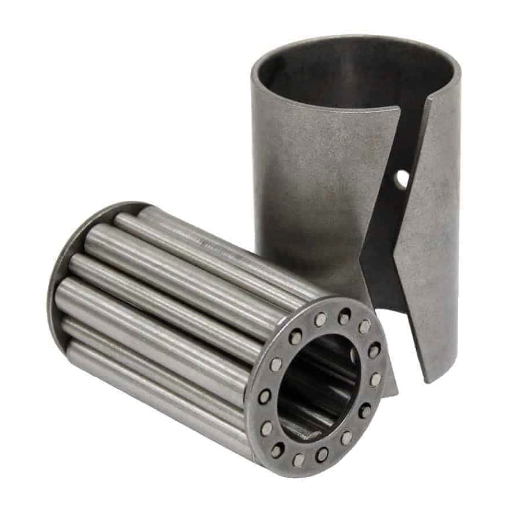
Understanding the unique design of tapered roller bearings
The design of tapered roller bearings is one of the reasons its load capacity is improved. These bearings are made with tapered inner and outer raceways and tapered rollers, enabling them to efficiently disperse forces from both radial and axial loads. Such configurations also ensure that the rollers and raceways are in contact optimally, which reduces stress concentrations and allows the bearing to deal with heavy loads and complicated operating conditions.
- Typical Dynamic Load Ratings: They are most often used with bearings that support loads greater than 200 kN because of the bearing’s excellent construction and material characteristics.
- Material Mixture: Wear-resistance and durability in ever-increasing high-load environments are further boosted by high-chromium steel.
- Contact Angle: The contact angle with tapered geometry is higher than that of normal rollers, which increases the axial load capacity that the bearing can withstand.
The efficiency of tapered roller bearings can be improved by ensuring everything is properly aligned, lubrication is performed, and maintenance is done regularly. This design achieves optimal distribution of the load and reduces wear and service life even in harsh environmental and operational conditions.
Advantages in handling combined radial and axial loads
Tapered roller bearings are unique in that they can withstand both radial and axial loads simultaneously. The rollers are shaped like cones, ensuring that the contact surfaces are maximally loaded when needed. Its geometric structure enables the bearing to take on significant amounts of axial loads along with radial forces. That is why it’s perfect for use in automobiles, gears, wheels, heavy machinery work, etc.
- Contact Angle: The increased contact angle ( 10° to 30° ) is responsible for having a direct contribution to the improvement of axial load capacity. This explains the better effectiveness in combined load environments.
- Dynamic Load Rating: The range of 200 kN and over is very common. The bearing is quite reliable under extreme stresses, so it is perfect for regions with very high loads.
- Material Composition: By utilizing high chromium steel, the performance can be maintained through continual high pressure on low wear regions.
These reasons, together with other possible factors, guarantee increased reliability and an extended service life while being operational under sophisticated load conditions. Furthermore, the proper maintenance and alignment of the bearing increases the durability and effectiveness in many different industrial settings.
Frequently Asked Questions (FAQs)
Q: What are the main types of roller bearings?
A: The main types of roller bearings include cylindrical roller bearings, needle roller bearings, and spherical roller bearings. Each type is designed for specific applications and load conditions, offering various benefits in terms of load capacity, speed, and operating life.
Q: How do needle roller bearings differ from other types?
A: Needle roller bearings are characterized by their long, thin cylindrical rollers resembling needles. They are ideal for applications where radial space is limited but high load capacity is required. Needle roller bearings often use a cage to keep the rollers properly spaced and aligned, allowing for smooth operation in various machinery and appliances.
Q: What are the advantages of using cylindrical roller bearings?
A: Cylindrical roller bearings offer high radial load capacity and are suitable for high-speed applications. They are commonly used in electric motors, gearboxes, and other machinery where radial loads are predominant. These bearings can handle misalignment to some degree and are often used in pairs to manage both radial and axial loads.
Q: How do spherical roller bearings contribute to machinery operation?
A: Spherical roller bearings are designed to handle heavy radial and axial loads while accommodating misalignment. Their unique design allows for a 360° rotation of the outer ring relative to the inner ring, making them ideal for applications where shaft deflection or housing deformation may occur. They are crucial in heavy machinery and industrial equipment.
Q: What role do roller bearings play in electric motors?
A: Roller bearings are essential components in electric motors, supporting the rotor and allowing for smooth rotation. They help reduce friction, minimize wear, and extend the motor’s service life. Depending on the motor size and application, different types of roller bearings may be used, including ball bearing rollers or cylindrical roller bearings.
Q: How should roller bearings be properly maintained?
A: Proper maintenance of roller bearings involves regular lubrication with the appropriate grease or light oil, as specified by the manufacturer. It’s important to monitor operating temperatures, vibration levels, and noise to detect potential issues early. Regular inspection and cleaning can help prevent contamination and extend the bearing’s operating life. Proper storage and handling are also crucial to maintain the bearing’s quality.
Q: What factors affect the service life of roller bearings?
A: Several factors influence the service life of roller bearings, including load conditions, operating speed, lubrication, environmental factors, and installation quality. Proper alignment, adequate lubrication, and protection from contaminants are crucial for maximizing bearing life. The choice of high-quality bearings from reputable manufacturers like NSK can also significantly impact long-term performance and reliability.
Q: How do roller bearings compare to other bearing types in terms of friction reduction?
A: Roller bearings generally offer lower friction compared to plain bearings or bushings, especially under heavy loads. They convert sliding friction into rolling friction, which is inherently more efficient. This reduction in friction leads to improved energy efficiency, reduced heat generation, and extended component life in various applications, from industrial machinery to household appliances.
UCTH213-40J-300 with Setscrew(inch)
CNSORDERNO: Normal-duty(2)
TOGN: UCTH213-40J-300
SDI: B-R1/8
SD: 2 1/2
UCTH212-39J-300 with Setscrew(inch)
CNSORDERNO: Normal-duty(2)
TOGN: UCTH212-39J-300
SDI: B-R1/8
SD: 2 7/16
UCTH212-38J-300 with Setscrew(inch)
CNSORDERNO: Normal-duty(2)
TOGN: UCTH212-38J-300
SDI: B-R1/8
SD: 2 3/8
UCTH212-36J-300 with Setscrew(inch)
CNSORDERNO: Normal-duty(2)
TOGN: UCTH212-36J-300
SDI: B-R1/8
SD: 2 1/4
UCTH211-35J-300 with Setscrew(inch)
CNSORDERNO: Normal-duty(2)
TOGN: UCTH211-35J-300
SDI: B-R1/8
SD: 2 3/16
UCTH211-34J-300 with Setscrew(inch)
CNSORDERNO: Normal-duty(2)
TOGN: UCTH211-34J-300
SDI: B-R1/8
SD: 2 1/8









